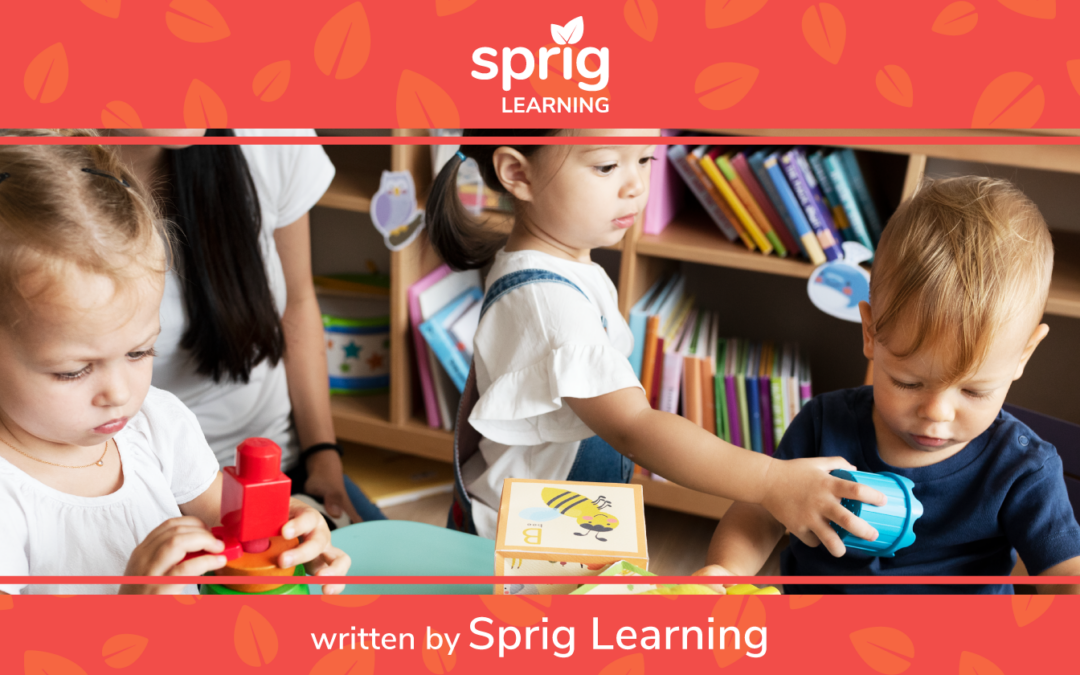Sprig Learning creates holistic and inclusive early learning programs for pre-K to Grade 3 students.
Early childhood education is defined by the United Nations Educational, Scientific and Cultural Organization and the National Association for the Education of Young Children as birth to 8 years of age. This corresponds to pre-K to Grade 3 in the education system.
It’s the early years from Pre-K to Grade 3 that is especially critical.
There are many reasons for this. Chief among which are:
- Pre-Kindergarten is an underserved market.
- There is a strong connection between pre-kindergarten and the primary years.
- Early Childhood Education (ECE) is a powerful driver of educational equity.
- Evidence-based early literacy instruction can be introduced as early as pre-K.
Each reason is elaborated upon below, accompanied by an ideal scenario that adequately addresses the point raised.
1) Pre-Kindergarten is An Underserved Market

Funding for K-12 schools are treated differently than funding for preschools in both Canada and the US.
There simply aren’t as many preschool programs as there are elementary schools operated by school districts.
To demonstrate, approximately 1.6 million children attend preschools in the US. This number includes both private pre-kindergarten programs, and also federal- and state-funded public preschool programs.
Contrast that with the 3.4 million children in the US that attend kindergarten in public schools. Even without including private or charter schools, it’s more than twice the amount of preschool children.
Preschool is a vital part of early childhood education. However, lower preschool enrollments compared to K-12 education directly contribute to limited funding opportunities.
Insufficient funding leads to a lack of long-term vision and a scarcity of innovative solutions in early learning. Sprig is committed to ensuring that this market receives the support it deserves.
Ongoing research has shown that the greatest brain development in children occurs between birth to age 8.
Take a look at these compelling early learning statistics. They all speak to the importance of healthy early childhood development.
Ideal Scenario
Government, foundations, and private organizations actively contribute to financing early learning centers and programs, a recurring topic covered in Sprig’s newsletter. Additionally, the realization of universal preschool would further bolster support for early learning initiatives.
2) There Is a Strong Connection Between Pre-K and Primary Education

The primary goal of a preschool system is focused towards ensuring kindergarten readiness. In order to ensure readiness, the quality of pre-kindergarten education has to match that of the education provided in the primary years.
Just like secondary school students taking advanced placement (AP) courses to prepare for college or university, the introduction of high-quality material beforehand paves the way for a seamless transition to the next stage.
Similarly, are preschool students gradually introduced to the skills and concepts that they will need to apply in kindergarten to make the best of their learning?
If this is not the case, then there is a risk of a chasm developing, one which is difficult to cross for early learners.
Sprig has a myriad of high-quality evidence-based activities that work on essential early language and math development components.
In a study done in Virginia at a mixed-urban school district, pre-kindergarten attendance had a significant effect on the literacy achievement of Grade 1 students.
Students who attended the district’s preschool program had a higher percentage of students meeting or surpassing the reading benchmark versus those students who did not.
There are many more studies that affirm how the presence of accessible and high-quality preschool programs directly correlates with subsequent student success.
Ideal Scenario
Preschool programs (with increased funding and support) innovate to ensure greater quality. Sprig has previously written on what a high-quality early learning program looks like.
Some of the items on the checklist are: adequately equipping the classroom with educational materials, ensuring ongoing communication and offering opportunities for multiple kinds of play.
3) ECE is a Powerful Driver of Educational Equity

The world is embracing increased educational autonomy, allowing individuals with curiosity for a subject to pursue self-teaching. We so often hear of success stories from people who did not go to college, or in some cases, did not even graduate high school.
But even for those individuals, early education was important!
There was a teacher, or some other mentor in the early grades, who left a profound impression on them. It motivated them to go on and develop expertise in their fields in traditional or non-traditional ways.
Other than this spark of inspiration that allowed this curiosity or inquiry-based learning to flourish, developing the fundamentals of early literacy and numeracy was also important.
These foundational skills served as building blocks, enabling individuals to innovate, generate ideas, and execute them with confidence.
Considering this, it is disheartening to acknowledge that many young students are deprived of a high-quality early education. This deprivation denies them even a glimpse of inspiration and the essential learning skills they deserve.
Ideal Scenario
If the accessibility and quality of early learning programs improve, as stated in reasons 1 and 2, it should automatically make a difference in providing the right type of education to young students who need it most.
By addressing the issue of excessive reliance on standardized assessments and acknowledging the impact of implicit bias in early learning, we can significantly enhance educational equity.To understand how these two things affect equity, check out this article.
Sprig has devised several strategies to combat these challenges. One notable approach is the implementation of holistic assessments, which consider diverse learning perspectives and maintain longitudinal data tracking to foster accountability.
4) Evidence-based early literacy instruction can be introduced as early as pre-K.
There is a rise of evidence-based early literacy instruction being mandated in teacher training programs and in school curriculums. This wave of evidence-based early literacy is affecting educators and students in all grades, including pre-K!
Studies have shown that children who receive evidence-based early literacy instruction in pre-K exhibit higher levels of phonological awareness, vocabulary development, and reading readiness compared to their peers who did not receive such instruction.
This early exposure to literacy skills not only enhances their reading and writing abilities but also cultivates a lifelong love for learning and literature.
It’s not just that there is a link between early learning and academic achievement in the later grades, but the fact that concentrated effort earlier on can prevent excessive learning loss and avoid costly and ineffective interventions.
Early interventions are important, but the best approach is to provide students with very strong core tier 1 instruction from the beginning.
By opting for an evidence-based approach to instruction that focuses on foundational skills that have been proven to lead to reading success, all students receive the support they need. This reduces the need for later interventions and sets them up for long-term academic achievement.
Ideal Scenario
School districts collaborate closely with preschools in their areas to ensure that preschoolers receive developmentally appropriate and research-based instruction. Such collaboration can be in the form of joint professional development, lending resources or sharing tools.
It makes for a much smoother transition from preschool to kindergarten when the kids have taken part in early literacy activities such as shared reading and have been exposed to concepts such as alphabets and letter sounds.
To create an ideal evidence-based early childhood classroom, there is a considerable amount of work to be done. The University of Central Florida has developed a professional development tool that serves as an observation guide to ensure correct implementation.
As such, preschool organizations require all the assistance they can get to ensure alignment with research and create optimal learning environments. It helps when another organization also focusing on early learning, such as an elementary school, who has undertaken similar evidence-based PD can impart this knowledge and practice to the preschools.
Moonshot: Taking Early Childhood Education Where it Needs to Be

Sprig Learning wants to ensure every child has a fair shot at success. Starting early is so important to achieving this aspiration!
This article hopes to make it clear why ECE should be prioritized– demonstrating a need for it in the market, its connection to student success, its ties to educational equity, and the opportunity that exists at the present to apply evidence-based learning to the totality of a school system, starting from pre-K!
To join us and discuss ideas on how, together, we can raise the bar of early childhood education, please get in touch with our team.

